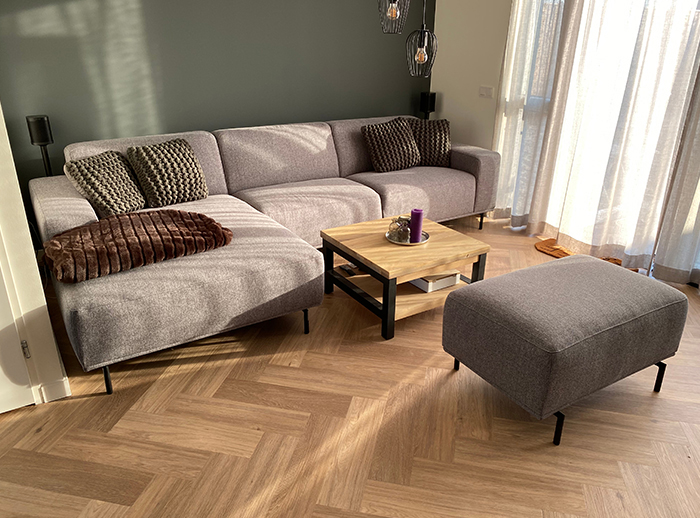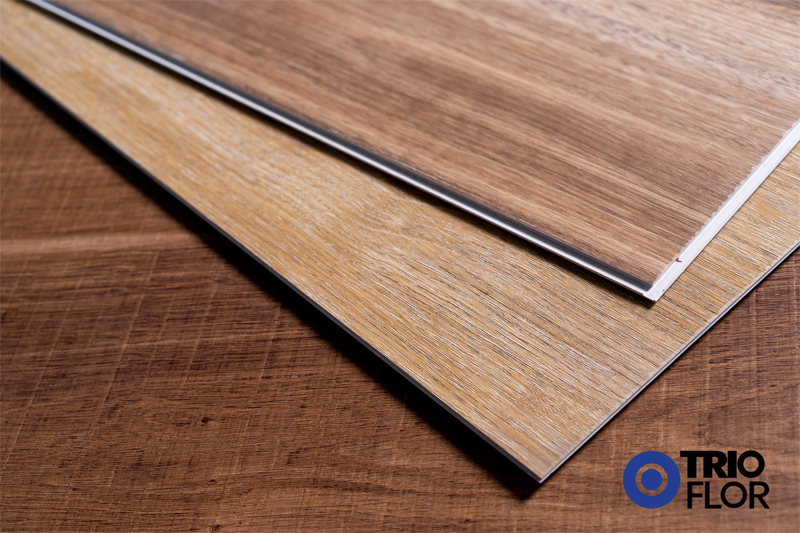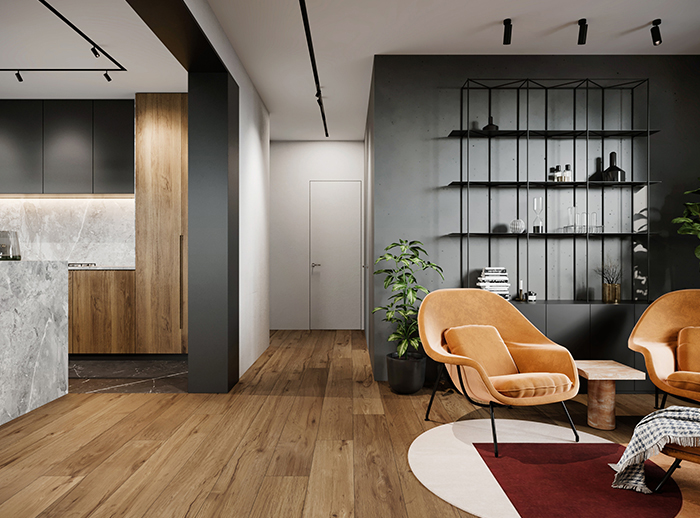
Polyurethane is a durable, long-lasting finish for hardwood floors and other wood surfaces. It provides protection against a variety of scratches and other damage, keeping your floors in pristine condition and tempering the hardwood material for years to come.
You should use at least 2-3 layers of polyurethane on your wood floor. Depending on the type of polyurethane you decide to use, two coats may be sufficient. However, if you are using a water-based polyester, 4 coats are recommended to get the overall finished look.
You don't need many tools to apply polyurethane to a floor, it depends a lot on the type and brand you use. All in all, this is a relatively cost effective and long lasting way to ensure your floor stays in good condition for a long time. In the rest of this article, I will discuss the two main types of polyurethane, their advantages and disadvantages, coating procedures and application tips.

There are two different types of polyurethane finishes: oil-based poly and water-based poly. Both have their advantages and disadvantages and your decision on which one to use will depend largely on the nature and color of the floor.
There are several variables to consider when choosing which polyurethane to use; if you have a darker colored floor, it is usually recommended that you use oil-based poly because it has a yellowish color that stains the wood and makes it look darker and more attractive.
However, if you have a lighter floor, such as maple, the best choice is water-based polyethylene. Water-based finishes have no color and do not stain the floor like oil-based polyesters do.
I will describe each type of polyurethane and provide application tips and general advice on coating procedures.
Waterborne polyurethanes usually require a minimum of 3-4 coats to be effective. Although there is some evidence that too many coats can result in a plastic-like finish, waterborne polyesters are thinner than other types and therefore require several more coats to provide the same protection for hardwood floors.
There are several benefits to using waterborne polyethylene.
► It is more environmentally friendly than oil-based polyurethanes.
► It does not have a strong odor.
► It dries much faster than any other type.
This means you can easily apply each coat in just a few hours, making the varnishing process very time efficient.
However, there are some drawbacks to using water-based polyethylene: it can be slightly more expensive than other polyurethanes, and some suggest that you must pay an extra $1.50 per square foot.
While the price may be objectionable, it is important to remember that the better the quality of the polyethylene and the better the finish, the longer the wood floor will last. If you use a cheaper poly, or indeed the wrong type of poly, you will find that the finish may not be as good as expected.

It is critical to use more coats in high traffic areas of your home, such as hallways and kitchen areas. The more abuse your hardwood floors take, the more protection they will need.
Here are some tips for applying waterborne polyurethane.
► Make sure you vacuum the floor before applying the first coat. Remove all debris and cobwebs and keep the area well ventilated (do not open windows).
►Check the floor for imperfections and defects before you start. Taking this into account will ensure that your coating is as perfect as possible.
►Dilute the polyurethane with mineral spirits prior to application. This will prevent dripping and keep the finish in pristine condition. It also helps prevent the area from becoming plastic-like in appearance.
►Apply the corners of the area using a synthetic brush. You can use a regular roller in most spaces, but a synthetic brush will improve precision.
►Make sure you sand and clean each coat properly after it dries. Sanding prevents the finish from looking rough and stops dirt and impurities from being deposited between the layers.
► In most cases, it is recommended to apply four layers of water-based polyurethane. If you do not apply enough layers, your finish will look poor. Remember, the more layers you use, the better your floor will look.
►For the last layer, do not sand it. Instead, wipe the dry surface with a clean, dry cloth. This will help the floor maintain a fresh look and optimize the finish.
►Always use safety equipment, such as masks and gloves. Using these will protect you during the process.
Generally speaking, if you are using an oil-based polyester, it is recommended to apply 2-3 coats to get a perfect finish. Of course, this depends on the type of flooring you are using and the brand of polyurethane, but it is safe to say that 3 coats is the best option.
Oil-based polyethylene has many benefits and is usually the best choice for dark floors. It's denser than water-based polyethylene, so you don't need as many coats, and it's also much cheaper than its alternatives. It's also very easy to apply because of its strength.
However, there are some drawbacks to using oil-based polyesters, such as its pungent odor and drying time. While water-based polyesters tend to take a few hours to dry, oil-based finishes can take up to 10 hours to completely dry a coat.
It is also recommended that furniture not be left on oiled wood for at least a week to prevent imperfections in the finish.
Oil-based polyesters are usually characterized by a pale yellow color. This is an advantage for darker floors, but over time it may become cheaper for lighter foundations such as maple.

The best tools for oil-based polymers include polishing pads. This type of applicator will buff and polish as you use it.
You can always use a T-bar to apply polyurethane to those stubborn corners. This will push the fluid into the corners with greater precision.
Of course, you will also need different strength sandpaper for oil-based polyesters because you will need to sand between the two layers.
Here are some tips for applying oil-based polyurethane.
► Use the hardest sandpaper you can find for sanding hardwood floors before applying polyurethane. This will ensure a smoother finish.
►Stir the oil-based polymer with a stick. Do not shake the container as this will encourage the formation of air bubbles that will eventually be visible on the finished floor.
►Start at the corner of the room and work your way to the exit. Try using the exit option to plan your coating so that you are not walking on a wet floor.
►As with waterborne polyurethane. Make sure to sand between each dry layer to ensure a perfect finish.
►Apply poly with very thin coats. You can use mineral varnish to make the layers thinner.
► Oil-based polyesters take a while to dry, so it is recommended to apply one coat per day to ensure that it dries thoroughly. With this in mind, make sure that the room is not too humid and that a stable temperature is maintained at all times.
► Do not place furniture on hardwood floors for at least a week. This will ensure that the foundation has enough time to dry.
►Make sure to keep away from sources of fire or direct heat. Oil-based polyurethanes tend to be highly flammable, so please keep this in mind when applying them to flooring. Do not smoke around the finished product for at least 2 weeks.
►As mentioned earlier, make sure you apply approximately 4 layers of polygons. Please read the instructions before using.
While it is always prudent to double check the manufacturer's instructions before applying polyurethane, it is recommended that at least 3 layers of water-based polyethylene and 4 layers of oil-based polyethylene be placed.
In a commercial setting, an additional layer may be required for wood floors due to high traffic, but 3-4 layers are recommended in a residential setting.
Of course, there are better options on the market for extending the life of your floor.
If you are worried that applying a protective polyurethane coating to your floor won't give you good results, you can find out about our SPC wear-resistant flooring, which is already manufactured with a wear-resistant layer. This makes it possible to extend the service life of the floor without too much treatment, and to make installation, cleaning and maintenance less labour-intensive. You can easily get a floor with a solid wood texture without having to bear the various costs associated with the original solid wood floor.
